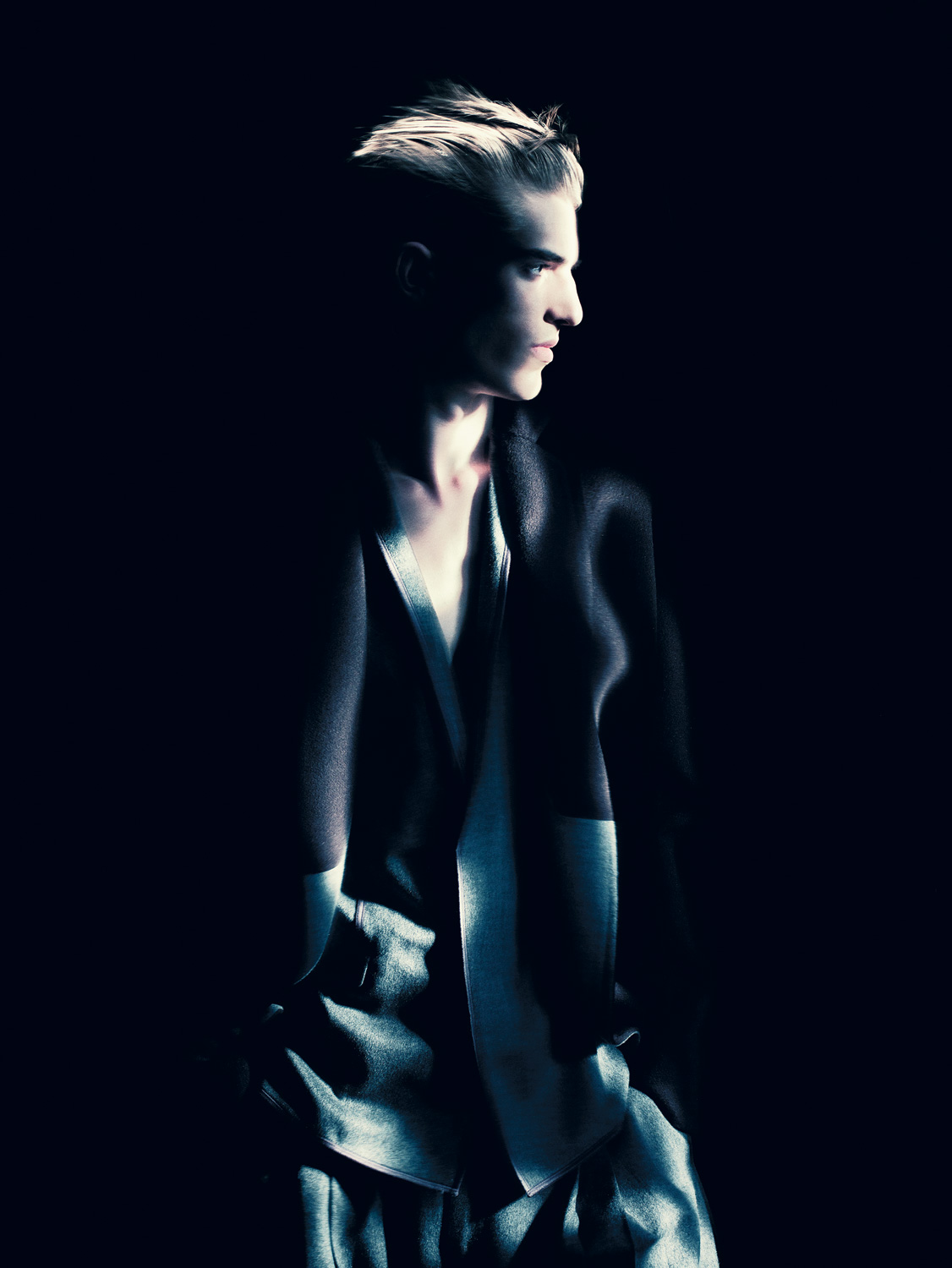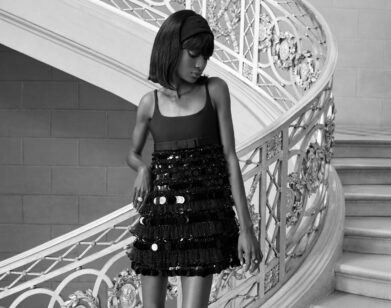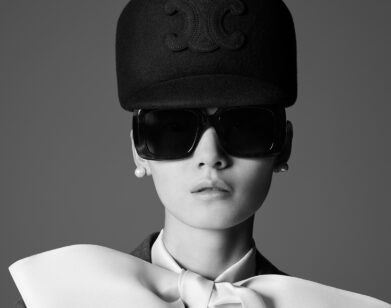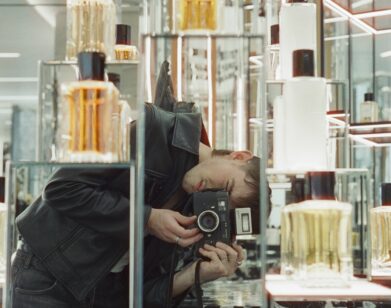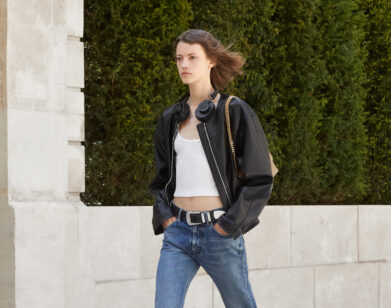Kris Van Assche
The story of Belgian designer Kris Van Assche, in the most obvious way, is defined by the story of his former boss, Hedi Slimane. Van Assche grew up in the town of Londerzeel, and after graduating from the prestigious Royal Academy of Fine Arts in Antwerp in 1998, he got an internship with Slimane, who was then designing for Yves Saint Laurent. When Slimane decamped to head up meanswear at Dior two years later, Van Assche followed, before leaving Dior in 2004 to start his own label. But after Slimane’s wildly influential run at Dior came to an end in 2007, Van Assche was summoned once again to try to fill the very slim pants of a man whose work at the label helped define a global menswear trend built around teenage-sexy, rock ’n’ roll chic.
Perhaps unsurprisingly, Van Assche’s clothes reflect his armored personality: They are focused, almost religiously, on understatement, attention to detail, elegance, and a mostly unwavering devotion to a color palette of black, gray, and chocolate. In taking the reigns at Dior Homme, Van Assche kept Slimane’s thin-lapel blazers and skinny jeans, but added volume to the silhouettes. And while some looks appear similar at first glance, the inspirations for Van Assche’s collections at Dior Homme, as well as his own eponymous line, have varied dramatically, from Indian robes and wide-brimmed Amish hats to dust on working man’s hands and conceptual notions of “lessness.”
The last two years have marked a subtle turning point for the 35-year-old Van Assche, who has weathered the early storms, turned back the critics, and started to carve out his own territory. But as he confesses to Rick Owens, beneath his organized, controlled surface lies a quiet intensity that continues to fuel his work.
RICK OWENS: The last time we saw each other was at my club [Spotlight Club]. How did you like the show? [Owens had invited the drag queen Christeene.]
KRIS VAN ASSCHE: Usually when you get to see people’s private parts, it’s because you asked, right?
OWENS: My concern was that they would tone it down and be less extreme, so from the very first second they got onstage, I was—
VAN ASSCHE: They didn’t tone it down, did they?
OWENS: [laughs] So, now that I have you: Did you always want to be a designer?
VAN ASSCHE: Ever since I realized that clothes just don’t drop out of the closet and that somebody was deciding what I would actually wear. I must have been around 10 or 12 when I started questioning things like, Why should somebody else decide what I’m going to wear? And I’m an only child, and I was born in this small town.
OWENS: Did your parents dress you? Was that something you reacted to?
VAN ASSCHE: Yeah, of course. My parents are really nice, but they’re very conservative. They’re like the most normal people in the world. And they had one big definition for life, which was: “Don’t get noticed. Be normal, that’s weird enough.” And that just didn’t work for me.
OWENS: Your reaction to the conservative element wasn’t very angry. It was kind of quiet and elegant, if that’s a reaction.
VAN ASSCHE: I’ve never had this really violent reaction. I was quite unhappy, so that’s violent, but it was a silent violence.
OWENS: Why were you unhappy?
VAN ASSCHE: Because I really didn’t fit in. But then when I started going to the academy when I was 18, that’s the day I started living, because that’s when I started having a good time.
OWENS: Because you were able to do what you wanted and that was satisfying?
This skinny, rock ’n’ roll look had become such a cliché in the streets that any designer would have had to take this collection in a new direction.Kris Van Assche
VAN ASSCHE: It was good. The only thing was that I was probably too young, looking back on it. I wish I had had more life experience, because when I graduated I was only 22. But apart from that I had a great time.
OWENS: I don’t know if being young is ever a mistake. [laughs] Can I ask how old you are now?
VAN ASSCHE: I’m 35.
OWENS: I’m going to be 50, so to me that seems very young, especially for everything you’ve accomplished.
VAN ASSCHE: It’s been a tough ride, and sometimes I think it wouldn’t have been as tough if I didn’t make all these mistakes because of my lack of experience. It feels like I’m growing up in front of bazookas sometimes.
OWENS: When I think of a job like yours, I sense so much pressure.
VAN ASSCHE: Yeah, well, I first worked here as an assistant for six years before I started doing my own label. And then after three years, they called me to come back to Dior, so I knew what I was getting into.
OWENS: Was that a hard decision to make?
VAN ASSCHE: Of course it was. There were thousands of reasons not to do it. All my friends were just telling me don’t do it because it’s gonna be so tough. Usually when people take over an old house, or a line, it’s because it’s almost dead. But that was not the case at Dior. I was taking over a success story, which is really tough to do, because nobody wants you to do the same thing and nobody wants you to change. But it’s still one of those propositions you can’t really refuse, because it was the possibility to do everything that was impossible at my old label.
OWENS: Do you get a chance to have little vacations outside of Paris?
VAN ASSCHE: I was just in Los Angeles actually. We went to New York for a photo shoot, and I decided to go to Los Angeles because I wanted to get a tattoo.
OWENS: Do you already have some?
VAN ASSCHE: Yeah. I have one that I had done in Paris on my left arm, but then I got one a month and a half ago in L.A.
OWENS: When I got my first tattoo, the best advice I got was, “It can never be too big.”
VAN ASSCHE: At some point you have to do these really intense things to just realize where you are, what is happening, what life’s about, time going by, and all that shit. It’s just writing it in your skin, right?
OWENS: Do you live alone?
VAN ASSCHE: I live with my boyfriend, but he has his own place as well, because we kind of both like our independence.
OWENS: That was just my indiscreet way of asking if you had somebody special in your life, so that’s good.
VAN ASSCHE: It’s important, because otherwise life would only be about work, which would really be a pity.
OWENS: Does he ever criticize you for being too obsessed with things and too into work?
VAN ASSCHE: He doesn’t like my sleepless nights.
OWENS: Do you have those a lot?
VAN ASSCHE: I never really used to, but they seem to have become one of my new habits that I’m trying to get rid of as fast as I can. I’m a total control freak. But I feel like the pressure has become almost more intense now that things are going better at Dior, because in the beginning everybody was just gonna hate it, and so there wasn’t much to lose. But now that things are starting to lighten up and I’m much happier with how the collection is going, there’s more pressure because I want the next one to always be better.
OWENS: You must have gone through an uncomfortable period, because nothing you were going to do was going to work. People were out to get you a little bit. That was a crazy position you put yourself in, Kris.
VAN ASSCHE: I didn’t put myself in that position. It was just part of the shitty job that somebody had to do. I really hang on to this idea that Dior Homme, as a collection, had reached its high point, and this skinny, rock ’n’ roll look had become such a cliché in the streets that any designer would have had to take this collection in a new direction. So I knew that somebody would have had to go through that difficult timing. It would have been really nasty for anyone. It just happened to be me. [laughs]
OWENS: Do you see your parents often now?
VAN ASSCHE: They’re very proud, obviously. They always think it’s too much every time they come to Paris. They’re like, “Are you joking?”
OWENS: I actually bring my parents to the women’s shows twice a year.
VAN ASSCHE: So how do they react when they see your shows?
OWENS: Well, they’re a little puzzled. But they try to be kind. It’s good for them to see the showroom with the people that we work with as a big family.
VAN ASSCHE: And that it’s happening in a good environment—like, not crazy.
OWENS: Yeah, um, right. [laughs]
VAN ASSCHE: And so they go to your store and see your statue? [Owens commissioned a wax sculpture of himself urinating.]
OWENS: Yeah, they don’t look. There are a lot of things that they’ve chosen not to look at in my life. The way that my mom puts it, she goes, “Well, as long as nobody gets hurt.”
Designer Rick Owens was born in California and lives in Paris. He was the 2002 recipient of the CFDA’s Perry Ellis Award for Emerging Talent.
Click here to watch videos of past Dior Homme collections.

